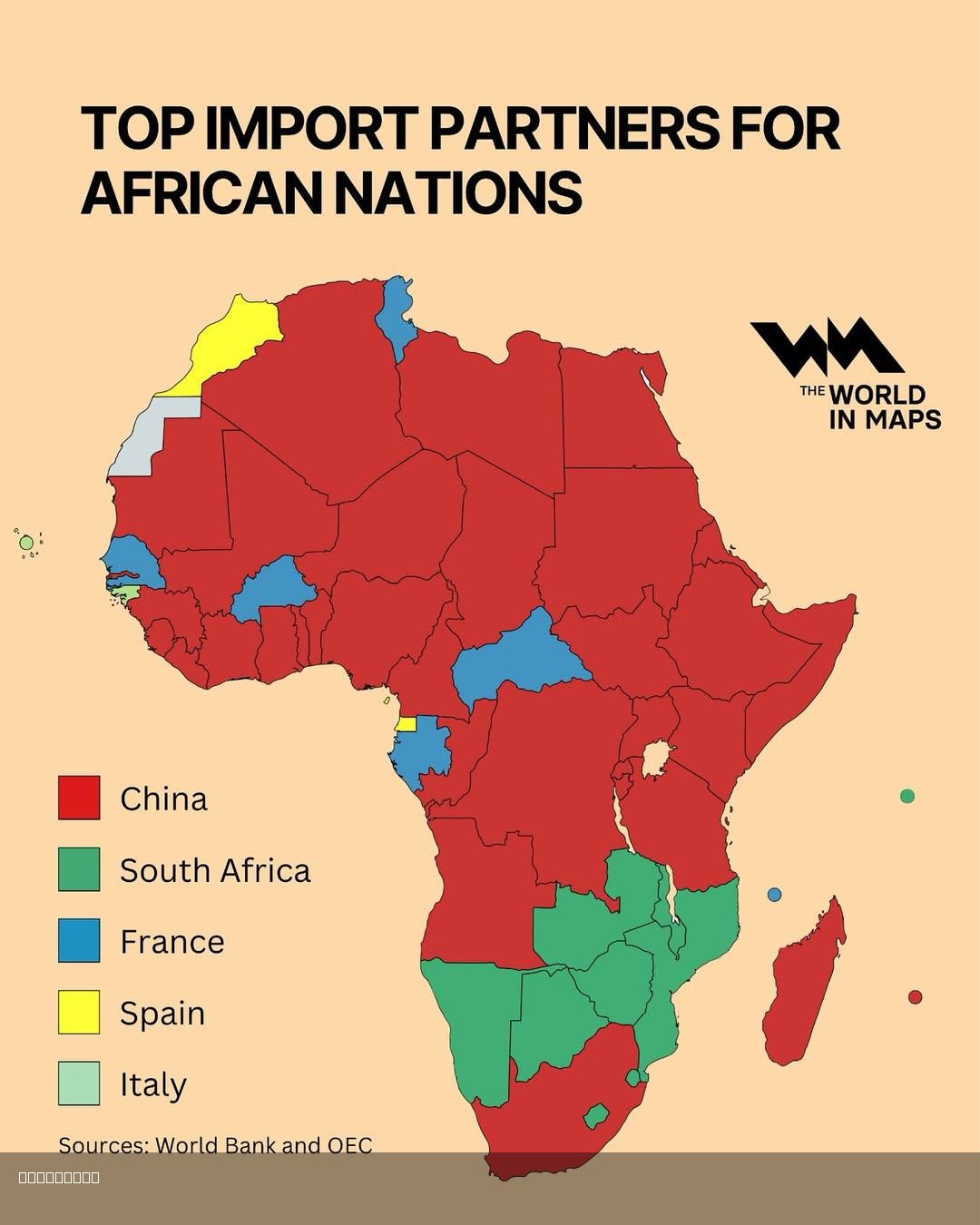Top Import Partners for African Nations Map


Marcus Rodriguez
Historical Geography Expert
Marcus Rodriguez specializes in historical cartography and geographic data analysis. With a background in both history and geography, he brings unique...
Geographic Analysis
What This Map Shows
This map illustrates the top import partners for various African nations, highlighting the countries from which each African nation imports the greatest volume of goods and services. By visualizing these import relationships, we gain insight into the economic dependencies and trade dynamics present across the continent. Understanding these connections can shed light on broader economic trends, regional partnerships, and the overall landscape of international trade within Africa.
Deep Dive into Import Patterns in Africa
When we talk about imports, we are essentially discussing the flow of goods and services into a country from foreign markets. Africa, with its diverse economies and rich resources, presents a unique case study of import patterns. For many African nations, imports are crucial for meeting domestic demands, supporting local industries, and facilitating development.
Interestingly, many African countries are heavily reliant on imports for essential goods such as food, machinery, and consumer products. For instance, nations like Egypt and South Africa tend to import significant amounts of machinery and equipment, reflecting their industrial needs. In contrast, countries in the Sahel region, such as Niger or Mali, may rely more on food imports due to insufficient local agricultural output.
Furthermore, the top import partners often reflect historical ties and geographical proximity. For example, many East African nations import heavily from China and India, which have established strong trade relationships in recent decades. The figures are striking: in 2021, China was the top source of imports for countries like Kenya and Tanzania. This indicates a shift in trade dynamics, where emerging economies are becoming key partners for many African nations.
Moreover, the trade landscape is also shaped by regional trade agreements, such as the African Continental Free Trade Area (AfCFTA), which aims to reduce trade barriers among member states. This initiative is expected to significantly boost intra-African trade and alter import patterns in the coming years. Have you noticed how the narrative around African trade is shifting to focus on self-sufficiency? That's partly due to the increasing emphasis on local production and reducing dependency on external imports.
Regional Analysis
Diving deeper into the regions displayed on the map, we can observe distinct import trends. In North Africa, countries like Algeria and Morocco primarily import energy products and machinery, often from Europe and the Middle East. Their geographical location makes them pivotal players in the Mediterranean trade network.
In West Africa, Nigeria stands out as a large market for imports, especially of refined petroleum products, machinery, and food items, primarily sourced from China, the US, and India. However, smaller nations like Benin and Togo often serve as transit points for goods headed into Nigeria, showcasing the interconnected nature of trade in the region.
Moving to East Africa, countries like Ethiopia and Uganda are seeing a rapid rise in imports of industrial goods and technology, again largely from China. This shift is indicative of their growing economies and development agendas aimed at industrialization. Conversely, Southern African nations like Botswana and Namibia maintain strong import ties with South Africa, focusing on consumer goods and automotive products, reflecting a more regional trade dynamic.
What’s fascinating is that despite Africa's wealth of natural resources, many countries still rely heavily on imports, particularly for high-tech goods and machinery. This trend illustrates the ongoing challenge of balancing local production capabilities with the need for advanced technology to drive development.
Significance and Impact
Understanding the import patterns of African nations is crucial for several reasons. Firstly, it informs policymakers about economic dependencies and vulnerabilities that may arise from reliance on foreign goods. As seen during global disruptions, such as the COVID-19 pandemic, countries that depend heavily on imports can face significant challenges in maintaining supply chains.
Moreover, the implications extend beyond mere economics. The nature of imports can affect local industries, employment rates, and even cultural exchanges. For instance, a surge in imported consumer goods can stifle local manufacturing, leading to job losses and economic stagnation. Conversely, strategic imports can bolster local industries by providing necessary technologies and inputs.
Looking ahead, the trends in import partnerships are likely to evolve. As African nations continue to pursue economic diversification and self-sufficiency, there may be a shift towards greater regional cooperation and intra-African trade. This is particularly relevant in the context of the AfCFTA, which has the potential to reshape the import landscape across the continent.
In summary, the map of top import partners for African nations not only highlights current trade relationships but also serves as a gateway to understanding the economic, social, and political complexities of the continent. The ongoing evolution of these patterns will be crucial for Africa’s growth and development in the years to come.
Visualization Details
- Published
- August 2, 2025
- Views
- 124
Comments
Loading comments...